Have you ever looked at a bonsai tree and felt calm and peaceful? These tiny trees are more than just decorations. They are living symbols of balance, harmony, and the special connection between people and nature.
In this guide, you’ll learn about the deep meanings behind bonsai trees, from their ancient history to the messages they carry today. Every type of bonsai tree has its own meaning, showing qualities like love, strength, and patience. You’ll also find out how different bonsai shapes represent life’s struggles, resilience, and growth.
Are you ready to learn what these small trees can teach us? Let’s look at bonsai trees, where each one shares a story about nature and finding peace.
- Related article: Grow and Care for Bonsai Trees
7 Key Takeaways on Bonsai Tree Symbolism
- Bonsai originated from the Chinese art of penjing and was introduced to Japan by Buddhist monks, evolving into a minimalist art form.
- Bonsai trees symbolize balance, harmony, and the deep connection between humans and nature, especially in Zen Buddhism.
- Different bonsai tree species, such as Azalea and Cherry Blossom, carry specific symbolic meanings, like beauty, love, and spiritual growth.
- The art of bonsai emphasizes the creation of living sculptures through pruning, wiring, and training to resemble nature’s beauty.
- Bonsai tree shapes, such as cascading or upright, represent various life qualities like strength, resilience, and endurance.
- Historically, bonsai trees were a status symbol in China and Japan, symbolizing artistic taste and nature’s beauty.
- Bonsai tree care, including nurturing them in small containers, reflects the tree’s symbolic strength and resilience over time.
What Does “Bonsai” Mean?
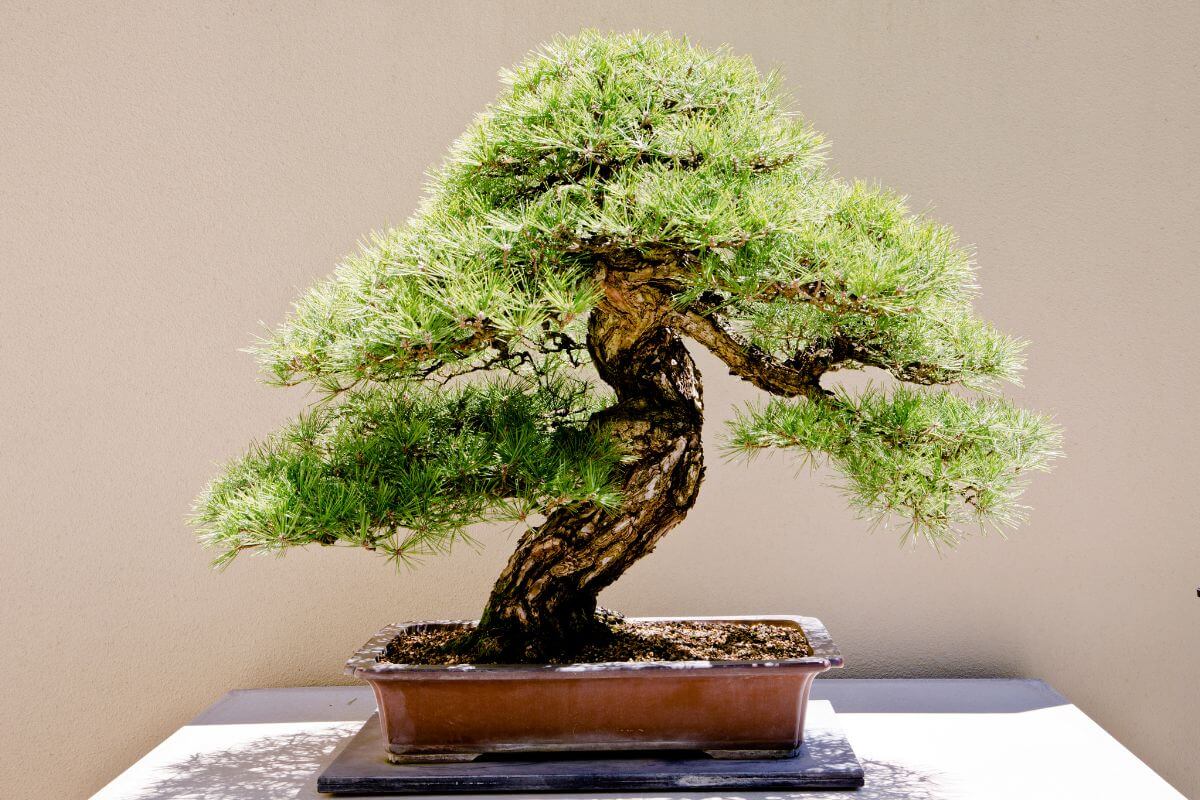
The term “bonsai” comes from the Japanese words 盆 (bon), meaning “tray” or “container,” and 栽 (sai), meaning “to plant.” This art form focuses on growing miniature potted trees, with each tree carefully pruned and shaped to resemble its full-sized counterpart in nature.
Unlike regular gardening, bonsai emphasizes artistry and precision, turning each tree into a living sculpture that reflects beauty, balance, and patience. The practice has deep historical roots, originating from Chinese traditions, and has since become a popular global hobby known for its intricate techniques and peaceful appeal.
Bonsai History
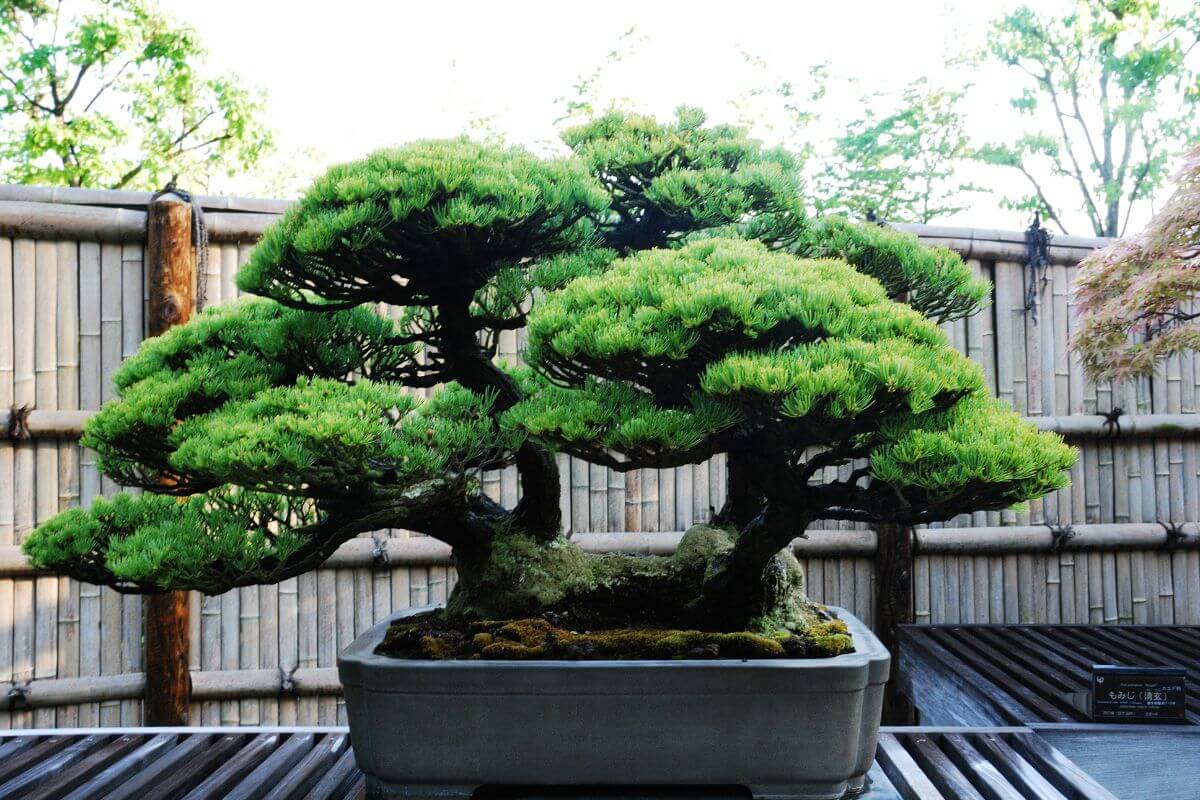
It is a common belief that the art of the Bonsai dates to 200 B.C. and finds its beginnings in ancient China, where it was referred to as “Penjing” or “Penzai” andwas reserved for the elite.
To create artificial forests similar to the natural trees they discovered in the mountains, the people from China invented methods for twisting and bending plants into unnatural shapes.
Bonsai Origins in China
It is thought that miniature trees were discovered at high mountain altitudes and that they were dwarf trees due to harsh climates. As early as the 4th century BC, Taoists recreated natural landscapes in the belief that magical properties would be accessible through their unusual, decorative shapes.
Chinese artists developed techniques for binding and pruning to reproduce the gnarled and twisted appearances found naturally at high altitudes.
Some scholars believe that these techniques were employed to reproduce yoga positions or Chinese mythological creatures such as serpents or dragons to bring good fortune.
Bonsai Origins in Japan
Through travel and trade, Buddhist monks discovered the art as early as the sixth century. The Bonsai arrived in Japan as early as the 13-century during the Kamakura period, establishing itself as a form of art.
We have Japan to thank for the continued practice and development of Bonsai art, and was cultivated by Buddhist monks who developed many of the original core principles associated with this art form.
At the Paris World Exhibition in 1878, the Bonsai tree was introduced to an international audience and the rest is history. Their popularity took off. After WWII, accessibility increased, and the cost diminished allowing for even more growth in popularity.
What Does the Bonsai Tree Symbolize?
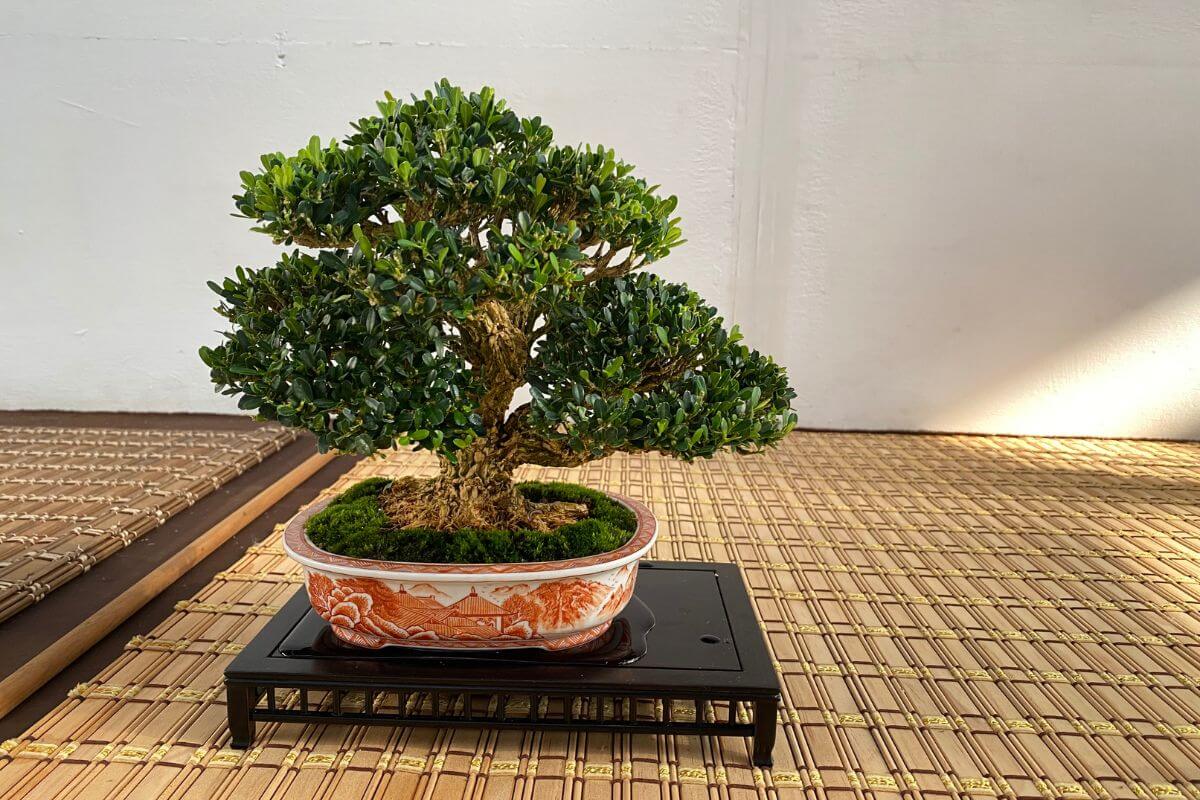
Bonsai trees are often considered symbols of peace, tranquility, patience, or good fortune by people from different cultures.
Some people use Bonsai trees in their home as decorative objects; some Buddhist monks think they’re good for meditating or contemplating.
Common symbols and meanings connected to the cultivation of Bonsai trees include:
- Abundance
- Balance
- Challenge
- Endurance
- Energy
- Harmony
- Healing and Health
- Life Cycles
- Patience
- Positivity
- Protection
- Resilience
- Simplicity
- Spirituality
- Stability
- Strength
Types of Bonsai Trees and Their Meanings
Bonsai trees are admired not only for their beauty but also for the special meanings they carry. Each type of bonsai represents different values and emotions. For example, the Azalea stands for beauty and love, while the Oak symbolizes strength and wisdom. Let’s take a look at some of our favorite bonsais and what they mean.
1. Azalea Bonsai Tree
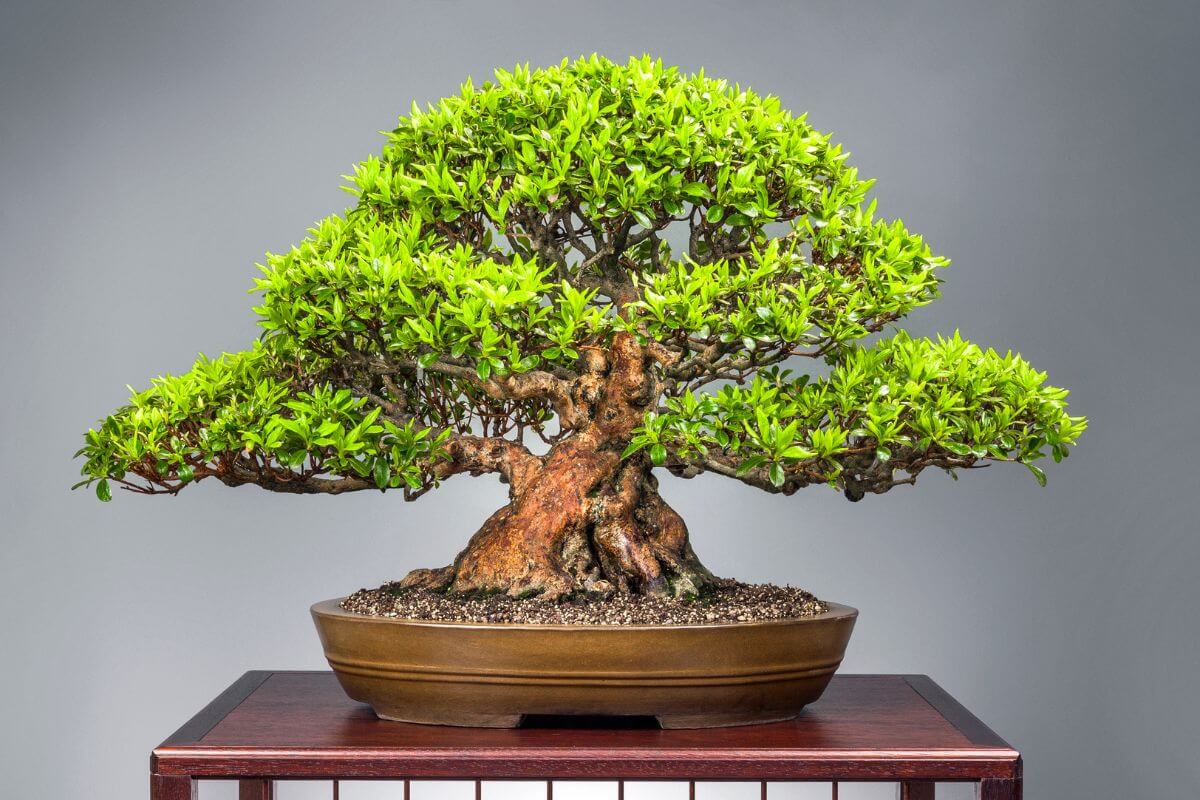
Gentility, beauty, and vulnerability are all evoked by the Azalea Bonsai tree. Even if in miniature form, like its full-sized parent tree, the Azalea Bonsai will explode with white, red, or pink blossoms representing feminine beauty.
It offers striking beauty and symbolizes love, intelligence, abundance, and passion. They are considered to bring harmony to any space and a symbol of femininity.
2. Cedar Bonsai Tree
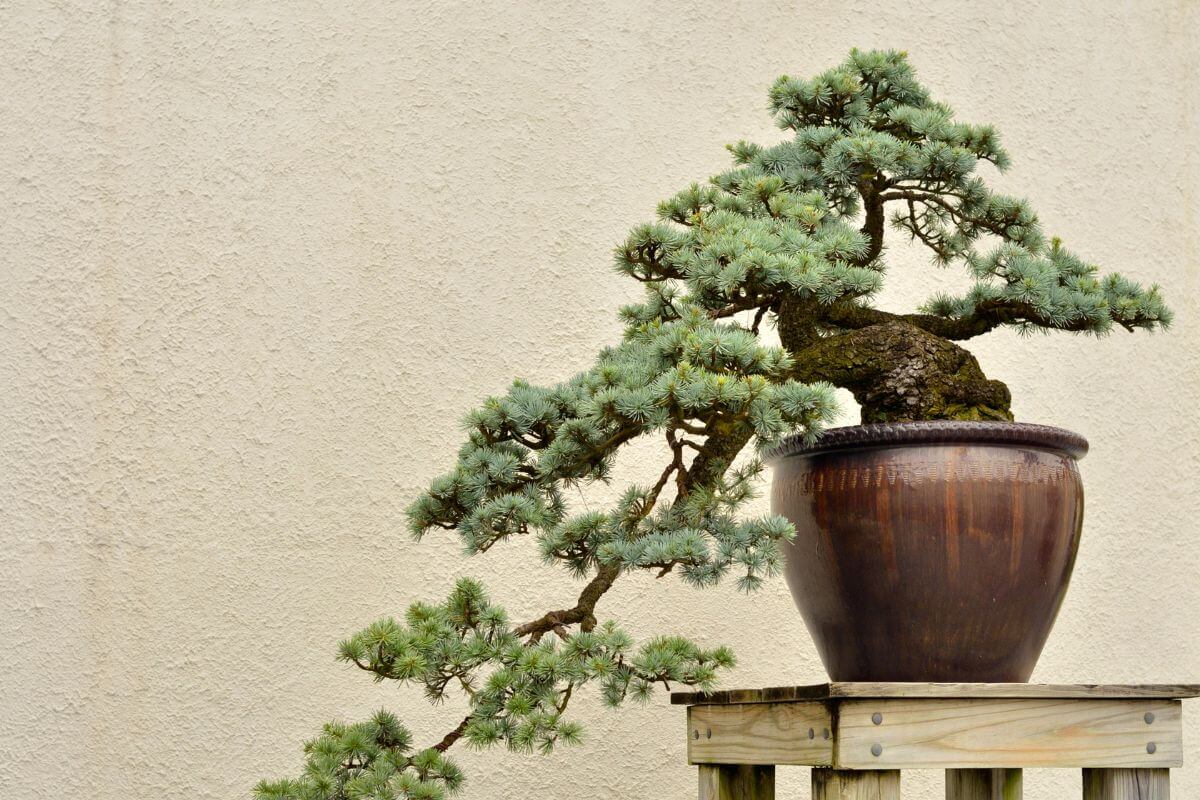
A Cedar Bonsai tree is often revered as a plant known to have physical healing properties and is often used in ceremonies as a purifying herb.
These trees are long-lived and can survive more than 300 years. In Bonsai art, they symbolize strength, protection, and immortality.
A Cedar Bonsai is associated with spirituality, prayer, and meditation. It makes a beautifu gift for someone having a rough or difficult time with things.
3. Cherry Blossom Bonsai Tree
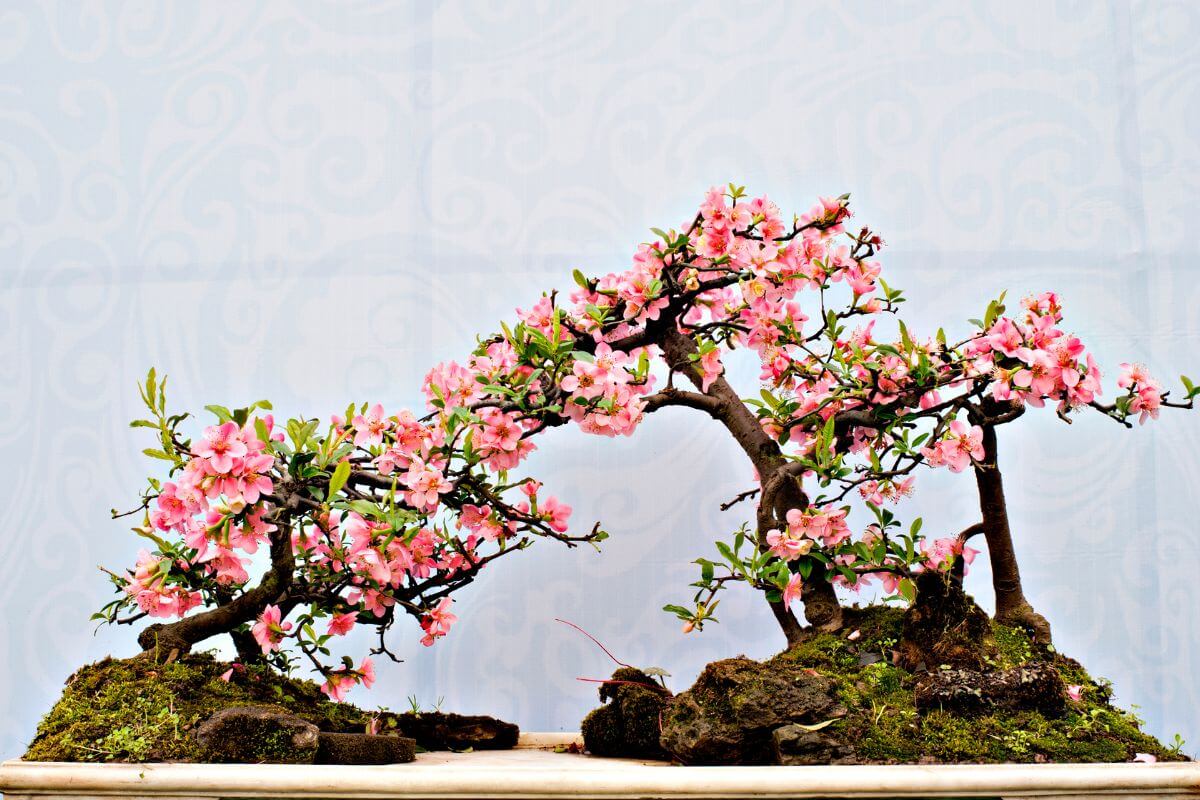
Symbolizing the existence of the Divine, the Bonsai Cherry Tree also symbolizes femininity and beauty.
The Cherry Blossom Bonsai tree will bloom to offer elegant, cheerful pink flowers that begin a cycle of growth and abundance. The Cherry Blossom is even Japan’s national flower.
When summer arrives, blooms will fade and drop, signifying that while all living things bloom and fade, life in its various forms will still continue.
4. Chinese Elm Bonsai Tree
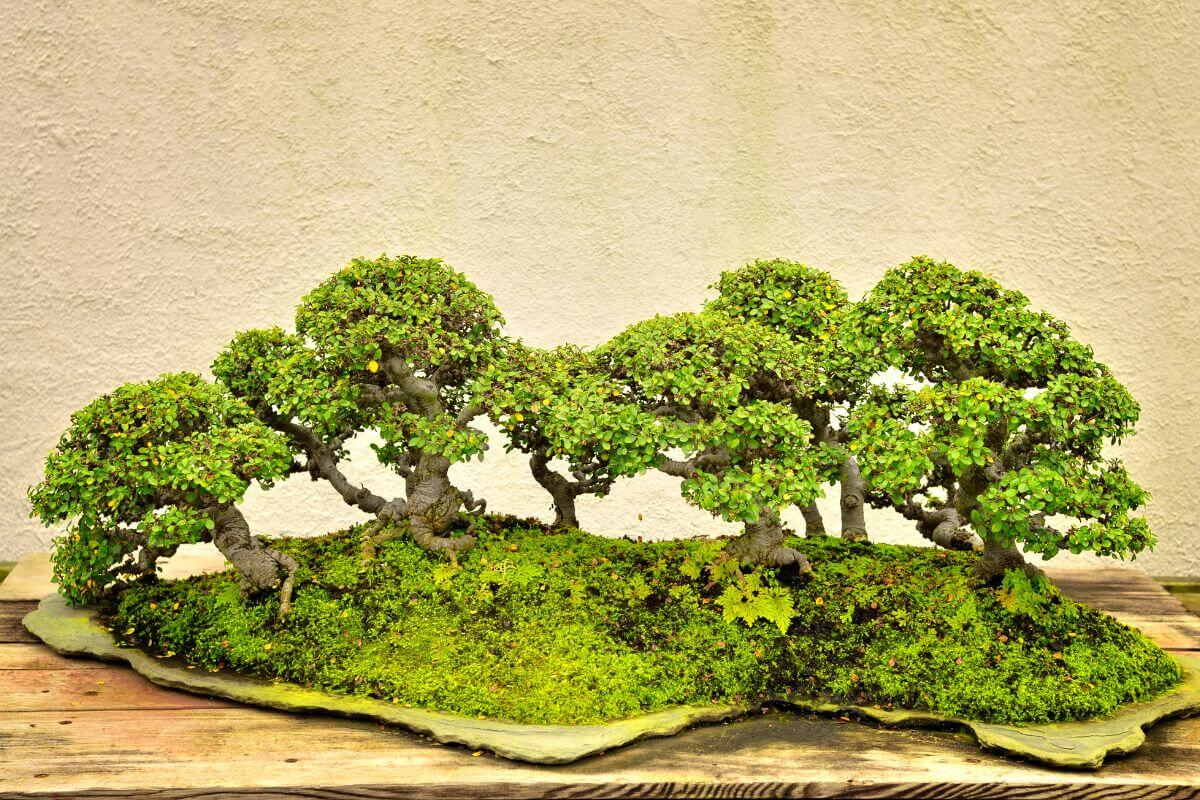
The Chinese Elm is known as a “tree of harmony,” symbolic of love, inner strength, and wisdom. It is associated with protection and protective powers.
Some even believe it to be capable of predicting the future. It is considered to represent a good omen for those who receive them as gifts.
5. Ficus Bonsai Tree
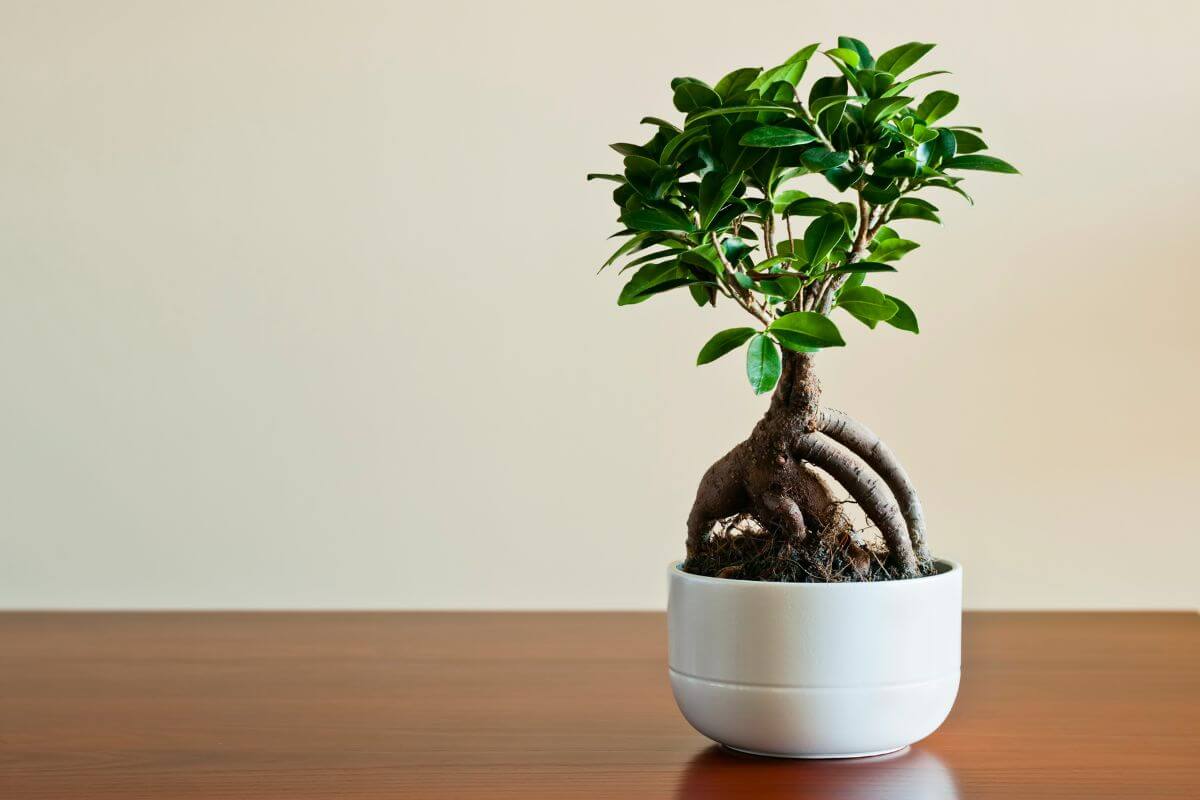
The Ficus Bonsai Tree is the ideal tree species for beginners to the art of Bonsai. Known as a cheerful tree, they symbolize simplicity and a new beginning.
It is a low-maintenance tree species that will grow rapidly. Because this tree is a quick grower, it is viewed as forward-reaching, joyful, cheerful, and positive.
6. Gingko Bonsai Tree
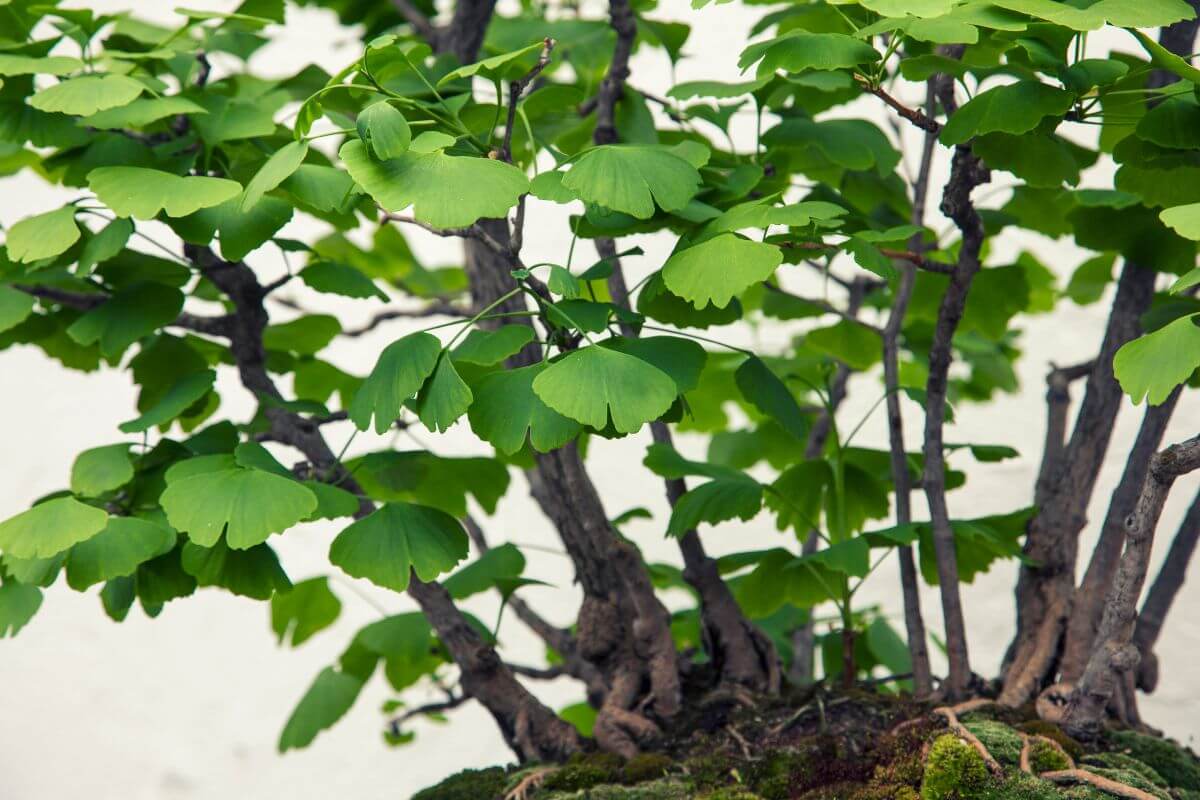
The Ginko Biloba Bonsai Tree is the last member of the Gingko family to survive. As such, it is the ideal symbol of perseverance, endurance, and longevity.
Boasting several medicinal benefits, this species of tree managed to survive the Hiroshima nuclear blast, demonstrating the species’ hardiness and persevering nature.
7. Jade Bonsai Tree
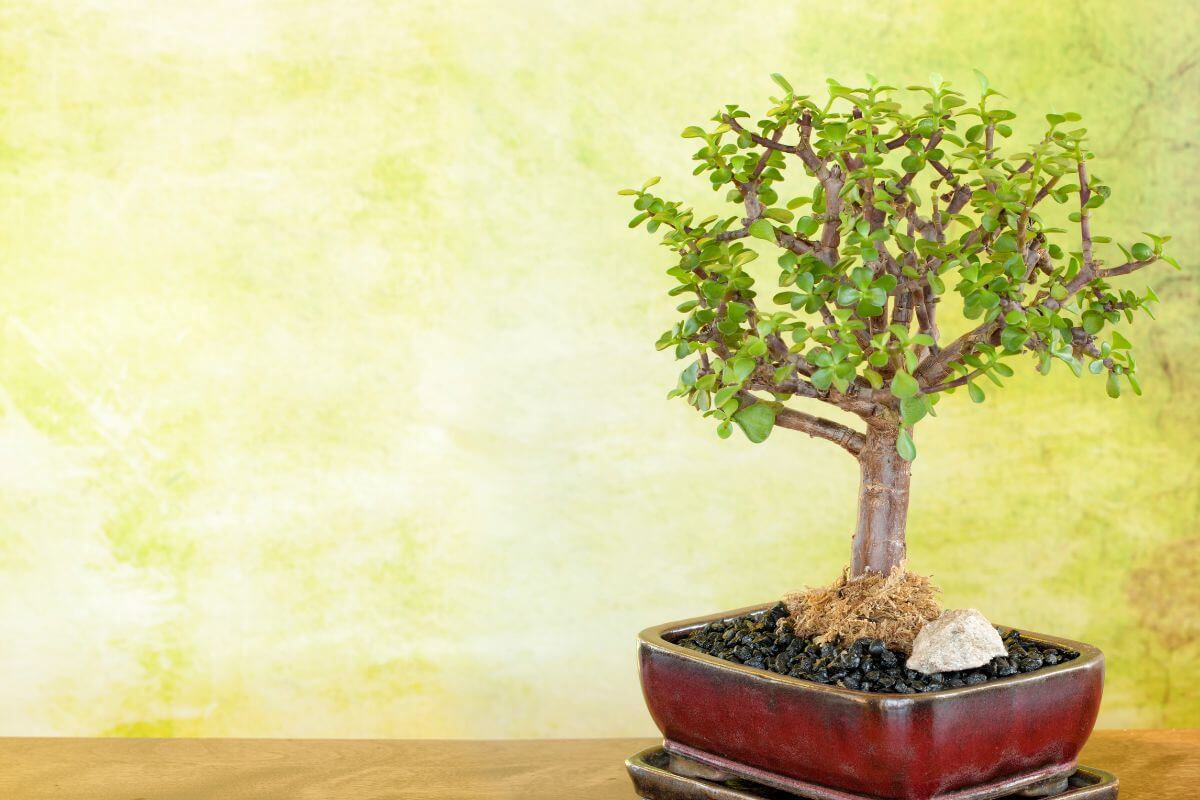
The Crassula ovata or Jade Bonsai Tree is very popular in feng shui, a Japanese philosophy. They are believed to bring many positive vibrations.
Often referred to as the Lucky Money Tree and Money Plant, it is believed to bring good luck financially and wealth to its owner or to the location where it is cultivated.
An appreciated meaningful gift at commercial ope nings and house-warming get-togethers, it symbolizes abundance with its vibrant green leaves.
8. Juniper Bonsai Tree
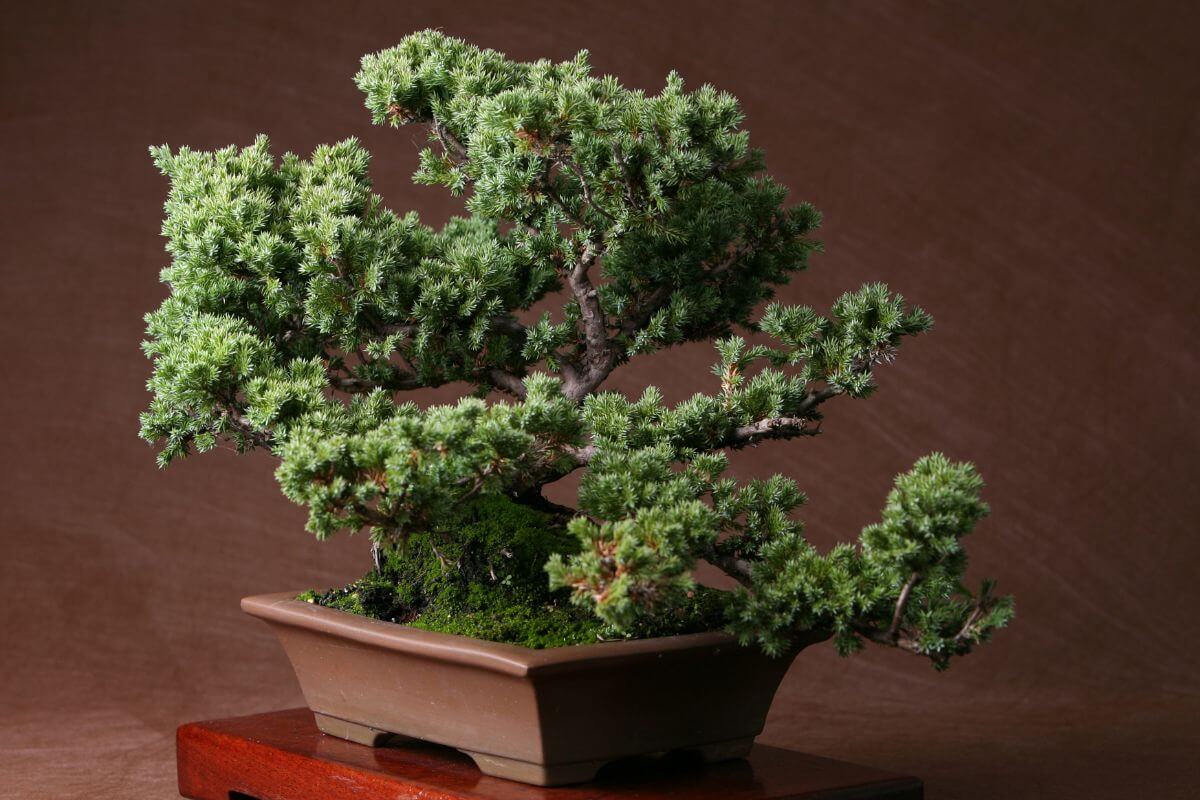
Some Juniper trees have been known to live for as much as 700 years. They are a symbol of power, strength, cleansing, purification, protection, and keeping at bay evil spirits.
Juniper trees have the capability to survive and overcome challenges. Juniper berries are utilized in healing and holistic medicine. A Juniper Bonsai is considered a protector from evil and negativity.
9. Maple Bonsai Tree

Admired for changing colors, the Maple Bonsai Tree symbolizes beauty, serenity, calm, peace, and elegance.
In Japanese works of art, maple trees emanate serene beauty. Autumn brings out their bright yellow, red, and orange foliage.
10. Oak Bonsai Tree
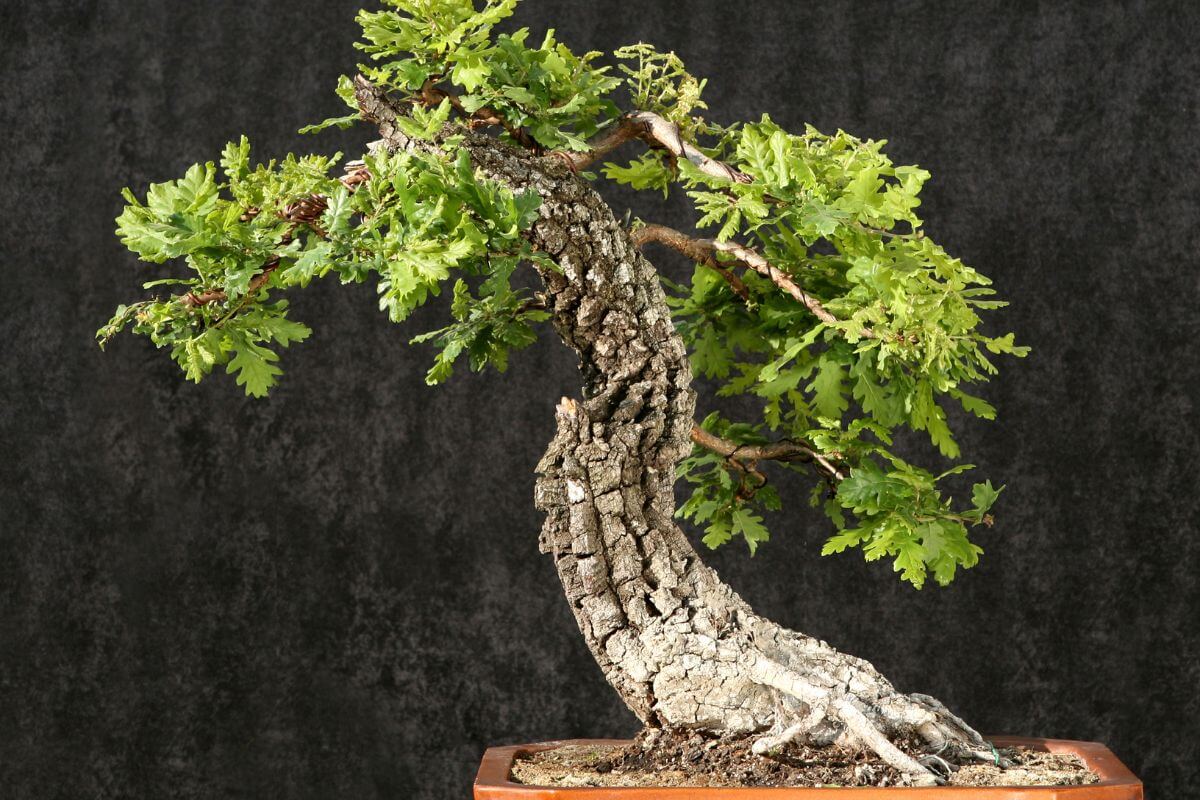
The Oak tree is known to live for 250 years or longer, so Oak Bonsai Trees symbolize longevity, wisdom, loyalty, strength, and eternal life.
In older, more mature oak trees, their strong trunks and aged bark covering them symbolize knowledge and spirituality.
Here’s a cool video on how you can create an oak bonsai tree:
Bonsai Tree Shapes and What They Symbolize
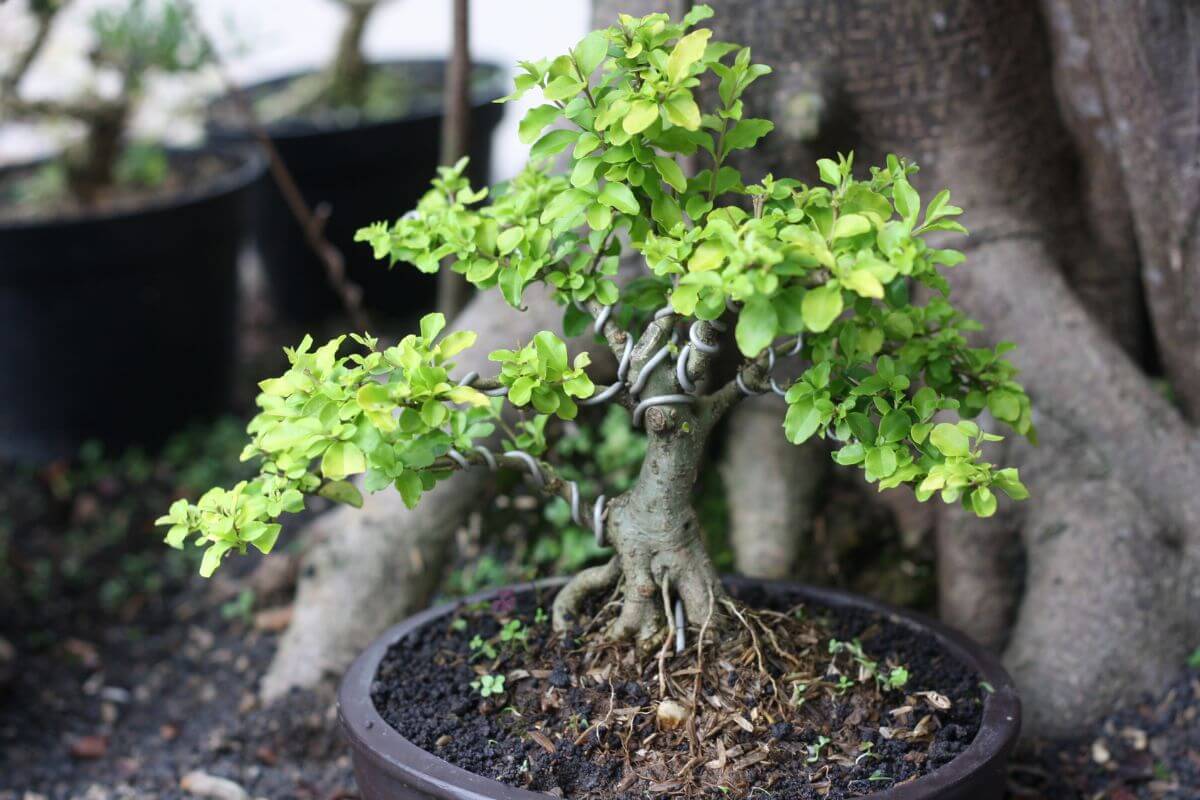
In Japanese culture, the shape of the Bonsai tree is just as symbolic as the species of the tree itself.
Four basic shapes offer some kind of significance to your living sculpture.
- Upright – An upright Bonsai will feature a thick trunk that appears straight. The straight trunk will be thick at the base and taper toward the branches. This Bonsai shape represents stamina, strength, and good health.
- Cascading – A Bonsai with a cascading profile will be cultivated in a deeper pot. As they hint at swaying over a high cliff, they symbolize challenges and changes to come.
- Informal upright – Bonsai trees with trunks that appear thicker at the bottom and slim out toward branches are often referred to as informal upright shapes because they appear to be a bit like an “S.” This shape signifies strength, stability, and endurance.
- Slanting – A slanting Bonsai tree will gently lean to one or the other side. Despite its slant, it will still feature balance and will nonetheless be strong. As a result, they represent strength and resilience together with the capability to overcome life challenges.
Bonsai Tree Symbolism Final Thoughts
Bonsai trees are beautiful, and that alone is appealing. However, if you consider the symbolism attached to the Bonsai species and the shape of the tree, you will find them even more fascinating, especially if you cultivate one by yourself.
Many cultures find that Mother Nature and plants offer spiritual wisdom, guidance and positive energy. The harmony of nature, balance, and meditation are all concepts that are integral to the art of Bonsai.
Pruning, wiring, and small containers for growth restriction help maintain your tree as a miniature plant. The Bonsai tree represents a small “living” sculpture – how many works of art can make that claim!
Bonsai Tree Symbolism FAQs
1. What Is the Symbolism Behind Bonsai Trees in Zen Buddhism?
Bonsai trees represent the deep connection between humans and nature, reflecting harmony and balance in life. Zen Buddhist monks saw bonsai as a symbol of harmony and spiritual growth, with each miniature landscape carrying profound significance in its peaceful beauty.
2. How Do Bonsai Trees Reflect Strength and Resilience?
Bonsai trees symbolize strength and resilience through their ability to thrive in a shallow container. The meticulous care and training they undergo make them a symbol of strength, representing perseverance and the enduring power of nature over time.
3. Why Were Bonsai Trees Considered a Status Symbol?
Historically, bonsai trees were regarded as a status symbol, particularly in Japan and China. Chinese monks and aristocrats used bonsai to showcase their artistic taste and connection to nature’s beauty, elevating it into a highly respected art form.
4. What Is the Meaning of White Flowers on a Bonsai Tree?
White flowers on a bonsai tree carry special significance, symbolizing purity, peace, and new beginnings. In the context of bonsai, they enhance the representation of nature, offering a visual metaphor for tranquility and spiritual renewal.
5. What Is the Origin of the Term “Bonsai”?
The Japanese term “bonsai” translates to “tray planting,” while the Chinese term “penjing” means “miniature landscape.” Both terms originated in China, with Chinese monks cultivating these miniature trees before the practice spread to Japan, where it took on profound significance in culture.
If you liked this article, these other ones might interest you:










